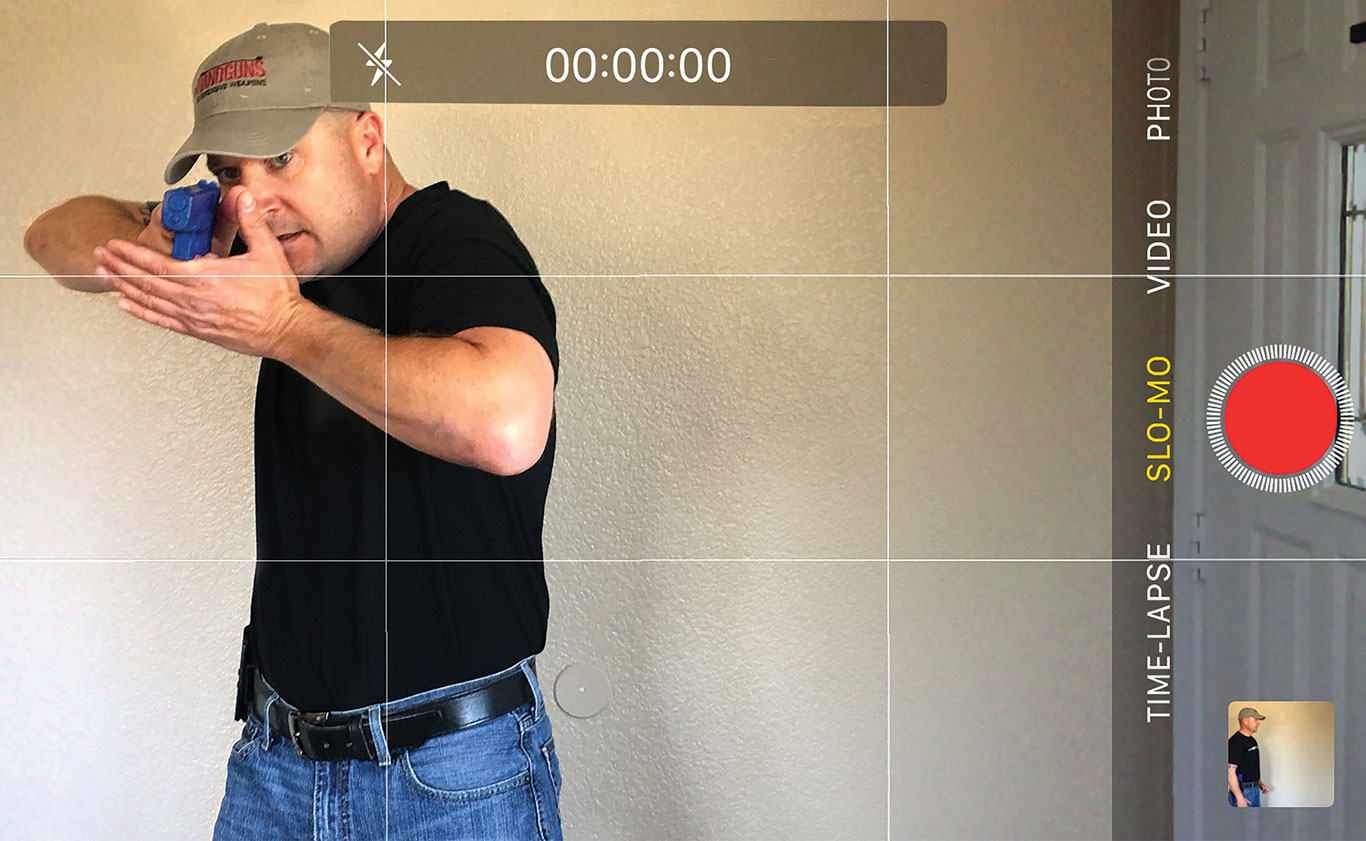
An ordinary smartphone with slow-motion capability will reveal flaws in your draw stroke you didn’t even know you had.
It’s often said that perception is reality. I beg to differ. Just because you perceive yourself to have good shooting technique doesn’t mean you actually do. If you want to improve a particular skill, you need to start by honestly assessing your current ability level. One of the most effective ways to do this is through video analysis.
For decades, professional athletes have studied film to identify their opponent’s tendencies for later exploitation. But in addition to looking for chinks in their opponent’s armor, the dedicated athlete watches himself or herself with a critical eye, hoping to diagnose and remedy problem areas.
These days, you don’t have to be an elite athlete with a huge training budget or have your own film crew to watch film of yourself. All it takes is a smartphone and someone to operate it or even a tripod to mount it to.
Recently, while taking Kelly McCann’s defensive handgun course, I witnessed firsthand the benefits of slow-motion video. Students conducted a series of timed draw and fire sequences. At the sound of the buzzer, the shooter would draw and fire a single round on an 8.5×11 sheet of paper posted seven yards downrange.
The drill was meant to establish a baseline and was shot “cold” first thing in the morning or right after lunch. Private citizens shot the drill from concealment, and the cops in the class worked from their duty holsters. This simple drill was a good barometer for the defensive handgunner.
The sheet of paper replicated the thoracic cavity—a primary target zone for personal defense. Seven yards was a realistic shooting distance, and the 1.5 second par time

